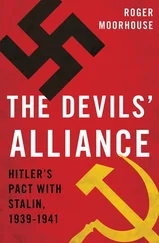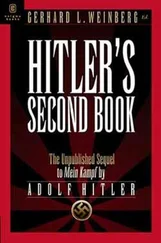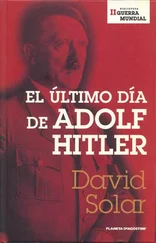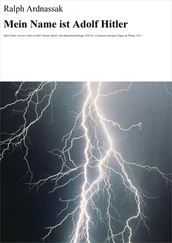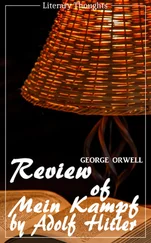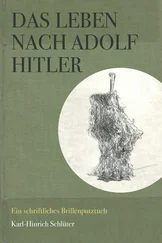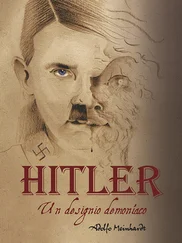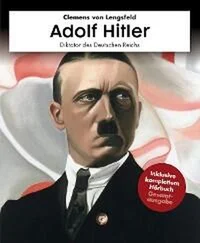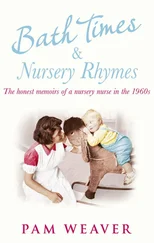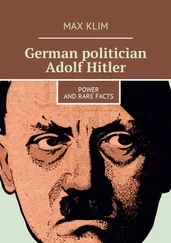According to Hitler in Heim, Monologe , the house was built in 1917. (TN)
The Kehlstein tea-house was a gift to Hitler from the NSDAP for his fiftieth birthday. A road six and a half kilometres in length climbed 1,710 metres to a parking place at a gallery entrance to a lift. This lift rose 124 metres directly into the Kehlstein tea-house. Seidler and Zeigert, Die Führerhauptquartiere , Herbig, p. 261. (TN)
Schroeder noted that: ‘the response would usually be muted, for the sessions round the fireplace tended to go on and on, and ended, if Hitler was not in a mood for conversation, in an oppressive, brooding silence.’
This large window was subdivided into ninety individual windows. Hitler, who was very proud of it, once remarked to his adjutant Wiedemann: ‘Really, I built a house around a window here.’
In her stenographic notes, Schroeder stated: ‘If any woman was present in whom Eva feared a competitor, then she either retired very soon to her room or became so unpleasant that Hitler would notice and persuade her to withdraw “because she was tired”.’
On the question whether Hess flew to Britain with Hitler’s knowledge or on his own initiative: one of Martin Bormann’s secretaries wrote in a letter to Schroeder: ‘I am of the opinion that Adolf Hitler knew nothing of the flight. Martin Bormann told me at the time… Martin Bormann was always straight! It is unlikely that Hitler would have been so stupid as to send Hess to negotiate with a man neither knew and who was a friend of Churchill.’ Hans Baur, Hitler’s personal pilot, said: ‘I overheard a conversation in the Reich Chancellery garden between Hitler and Göring: Hitler did not realise I was nearby when he screamed at Göring: “He has simply gone mad, he must know that by doing that he has stabbed me in the back!”’
Hitlers Zweites Buch , with a commentary by Gerhard L. Weinberg, Deutsche Verlags-Anstalt, Stuttgart 1961.
This visit took place on 20 October 1937. HRH the Duke of Windsor had abdicated as King Edward VIII on 10 December 1936.
This visit took place on 20 October 1937. The Aga Khan III (b. 2.11.1877 Karachi, d. 11.6.1957 Geneva) was the forty-first imam of the Ismaeli sect.
This visit took place on 4 September 1936.
Knut Hamsun (b. 4.8.1859 Lom, Norway, d. 19.2.1952 Grimstad). Novelist; 1920 Nobel Prize winner for literature; during the Second World War Nazi sympathiser, member of Norwegian Quisling Party; after the war convicted of collaboration and fined.
Herta Schneider née Ostermeier (b. 4.4.1913 Nuremberg) knew Eva Braun from their primary schooldays. Eva Braun was a frequent visitor at the Ostermeier’s because her parents were not interested in her. In 1936, Herta married, and from then until 1945 spent long periods at Obersalzberg with her children. On 28.4.1945 she left for Garmisch-Partenkirchen with Margarete Fegelein, Eva Braun’s sister.
The Vorbunker (built 1936) and Hitler’s bunker (built 1943) lay below the Reich Chancellery palace in the Wilhelm-Strasse and extended below the Reich Chancellery park. Access was by a stairway from the Reich Chancellery palace and a 105-metre-long corridor known as the ‘Kannenberg Corridor’ because of the provisions stored there, or from a tower-like entrance in the park. An alleged corridor into the Propaganda Ministry suggested in many sketches never existed.
This was the portrait by Anton Graff. Hitler’s attitude at the end can be summarized precisely by a letter from King Frederick to Podewils on 27.4.1745, exactly 200 years before: ‘I shall either hold out or, if not, I desire that everything shall be destroyed and the Prussian name be buried with me.’
Schroeder confirmed that Hitler said this. What it meant remains a mystery.
3rd edition, Ullstein, 1965.
‘Shoko-Dallmann’ were vitamin tablets with caffeine covered in chocolate and marketed in round tins.
Actually a Ju 352 of the Führer-Staffel , piloted by Major Friedrich Gundelfinger.
Hitler’s favourite manservant Wilhelm Arndt was one of the passengers aboard this flight. The official list of the dead was: Major Gundelfinger, pilot; Basler, radio operator; Arndt; Budka; Becker; Fiebers; Schleef; an unknown male and two women; E. Krüger and Christine Schroeder. ‘The two women were carbonised and identified from their clothing.’ The unknown male may have been a member of the SS-Begleitkommando who ‘left on a flight to Upper Bavaria with a manservant and two secretaries…’ Else Krüger was not the other woman identified. She was Martin Bormann’s secretary and remained at the Reich Chancellery until her escape from Berlin on 1 May 1945.
In her notes, Schroeder recorded: ‘In the autumn of 1944 the boss took “anti-flatulence tablets” containing two strong poisons including belladonna. I remember Dr Giesing saying that all the health problems Hitler suffered came from taking these poisons on a regular basis. Hitler complained about his serious loss of vision… I remember how often he used to scratch himself.’
Alwin-Broder Albrecht (b. 18.9.1903 St Peter/Freisland). 27.6.1938◦– 30.6.1939 as Korvettenkapitän deputised for Jesko von Puttkamer as Hitler’s liaison officer to the German navy; 30.6.1939 following an altercation between Raeder and Hitler discharged from Wehrmacht service but retained the right to wear naval uniform; 1.7.1939 appointed personal adjutant to Hitler in rank of NSKK Oberführer, where he had responsibility amongst other things for building work at the Reich Chancellery; 1.5.1945 disappeared without trace.
The planes were actually from the RAF, 617 Squadron. (TN)
The first wave of bombers which came in over the Hohe Göll took out the flak and smoke batteries, the second wave dropped no less than 1,232 tons of bombs. The bunkers and underground galleries, up to a hundred metres down, were largely undamaged, and of the 3,500 potential victims in the area at the time, only six were killed. Seidler and Zeigert, Die Führerhauptquartiere , Herbig, p.270.
This ’lad’ was actually thirty-year old SS-Untersturmführer Heinrich Doose (b. 1.7.1912 Kiel, d. 16.1.1952 Piding). From 1937 with the SS-Begleitkommando and Schaub’s driver; had previously been the driver for generals Burgdorf and Maisel and was present at the suicide of Rommel; on 21.4.1945 flew from Berlin to Ainring and brought Schaub from Hitler’s flat in Munich to the Berghof for the work of destruction; afterwards took Schaub’s family to Kitzbühl/Tirol; 2.6.1945 arrested by CIC at Berchtesgaden; 7.4.1948 released from internment.
In her notes Schroeder wrote: ‘I obtained his permission that the girls should have some of the furniture. He had no idea what to do about the paintings. I was to give everybody a note of what I was taking and remove them myself.’
Johannes Göhler, SS-Sturmbannführer from 21.12.1944.
Читать дальше

